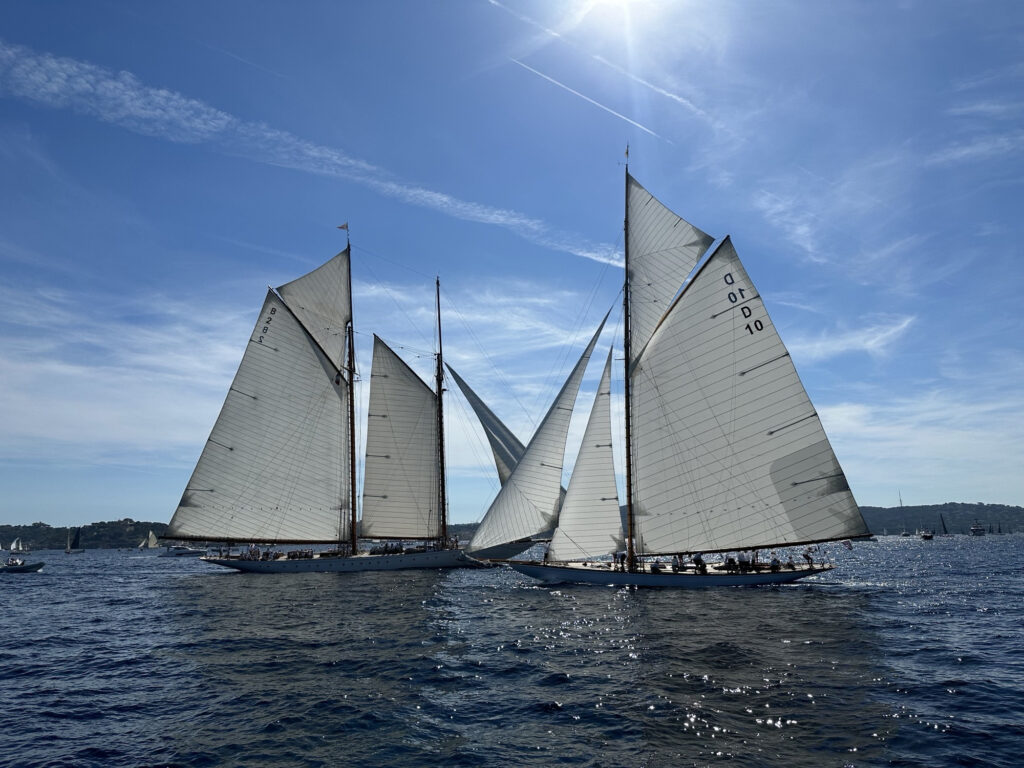
When you get invited on an adventure, the best thing to say is “yes”—and sort out the “how” later. This was my answer when my good friend Steve Travis asked if we should plan to participate in a regatta in Europe earlier this fall. Steve owns the Seattle-based TP52 Smoke that myself, and a cast of characters, are lucky enough to race on. Over the years, sailing with Steve has taken us all over, from Cowes week in the United Kingdom to Antigua in the Caribbean, plus more than a few laps of Vancouver Island in the Van Isle 360; he is always on the lookout for the next adventure. As the months passed, he found us a boat and dialed in on the regatta to sail it in. After a lot of anticipation, we dusted off our passports and got on the plane in late September, headed for another adventure of a lifetime—this time to take part in Le Voiles de St. Tropez in breathtaking Southern France.Once just a small fishing village, the town of St. Tropez has become a popular destination for artists, writers, and celebrities over the past few centuries. The charming medieval enclave is surrounded by stunning beaches, littered with luxury yachts, charming shops and markets, and a bustling nightlife of bars and restaurants. It stands strong as an icon of the Mediterranean lifestyle.The old town of St. Tropez, known as La Ponche, is a charming maze of narrow streets, colorful houses, and quaint shops and restaurants. It offers a glimpse into the town’s historic past and provides a delightful atmosphere for wandering and exploring. Best of all, the whole town encircles the ancient inner harbor, which is overwhelmingly packed full of the most beautiful boats on the planet.
Aside from the breathtaking setting of the French Riviera, the spectacular things about Le Voiles de St. Tropez are the boats. Hundreds of boats, with thousands of crew, all come together to celebrate the sport of sailing. While there are numerous sub-divisions and classes, the three main groups are split up into the Maxi, Classics, and Modern classes.
The Maxi racing class is genuinely the most unreal aspect of this event and defines the ideas of the jet set. Complete with America’s Cup and Volvo Ocean Race veteran crews, this is the pinnacle of the glamorous aspect of sailing. The Classics are the largest group, with hundreds of beautiful wooden yachts ranging from small boats just over 30 feet long to those over 100 feet that boast over 30 crew. They are nothing short of spectacular: Entire classes are comprised of racing yachts that are over 100 years old, but if you watched their starts, they are not acting their age. It’s not often that you get to watch literal museum pieces thrown around the racecourse, but there is something magical about seeing an entire fleet of century-old machines stretch their legs and do what they were built to do: race. Finally, the modern class is a bit more familiar to most racers, be it with the occasional exotic thrown in to mix things up. A hefty spread of boats from racer cruisers up to thoroughbred carbon fiber TP52s skippered by literal princes, the fleet welcomes all who want to throw their hat in the ring and race.The racing takes place on coastal courses, generally around 20 miles in length and around various marks. The most challenging part of the day was essentially getting in and out of the Gulf of St. Tropez. Shifting winds and crowded mark rounding set a challenging stage for crews to work around the course. Perhaps the most unique challenge is the number of spectator boats out on the water watching the racing, often paying little attention to where the racers are trying to go. There was more than one incident of screaming to get the attention of a small powerboat as they took photos of the fleet while blocking the lay line to the mark. The racing scene in the South of France is highly competitive, to say the least, with teams and crews coming from all over the world to participate.
We were racing with the modern fleet onboard a beautiful Italian Cookson 50 named TestaCuore, and we had our work cut out for us going up against a dialed-in fleet of racing boats. Our boat was a super cool offshore racer, a 50-foot weapon with a canting keel, which was terrific when we had the right conditions to use it. Ultimately, we found a mix of results with such a large fleet; we raced hard and made good moves and bad moves. Ultimately, it was a tough competition, and solid crews and well-sailed boats did well; that is all you can ask for with such a large fleet in such a fantastic place.
With a week so full of adventures, it is impossible to dive into this trip’s details here; as I sit on the plane flying home, my head is still spinning with all that has happened. I have one thing to say: Put this event on your bucket list, and if you get the opportunity to go on an adventure to St. Tropez, just say “yes.”


